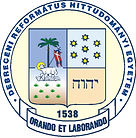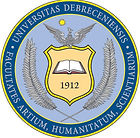
Dr. Gaál Botond honlapja
Herman Bavinck: Reformed Dogmatics
Baker Academic, Grand Rapids, Michigan, 2004. 697 pp., $ 49.99
Megjelent angolul
Nagyon jól döntött a Dutch Reformed Translation Society, hogy kiadják Herman Bavinck (1854-1921) Gereformeerde Dogmatiek (Református Dogmatika) című négykötetes művét angol fordításban. A 20. század második felében számos teológusnak jelent meg a teljes dogmatikai írása, közülük azonban tényleg hiányzott Bavinck nagyszabású műve. A holland nyelv ismerete nélkül nem volt hozzáférhető, holott egy olyan nagyformátumú teológusról van szó, aki a Református Világszövetség megalakulásakor komoly tekintélynek örvendett. Az első kötet Prolegomena címmel jelent meg, most a God and Creation címmel jött ki a második kötet. Rögtön fölmerül a kérdés, miért örvendezünk egy olyan mű első angol nyelvű fordításának, amely a mintegy száz évvel ezelőtt élt teológus gondolatait tartalmazza. Ha erre a kérdésre megválaszolunk, egyúttal a könyvet is megismertetjük az olvasóval. Több okot sorakoztathatunk föl.
Bavinck az európai protestáns teológia történetének, alakulási folyamatának érdekes, de egyben kritikus korában élt. A 19. század már elmúlóban volt, de még nem jelent meg az újreformátori teológia, Barth-tal az élen. Kíváncsiak lehetünk, vajon a legjobb református teológusok miként gondolkodtak a 20. század legelején. Bavinck műve erre alapos feleletet ad, mert híven tükrözi korát. Azzal a vitával nem foglalkozunk, hogy ő mennyire követte Abraham Kuyper-t, s mikortól váltak el útjaik. Bavinck önmagában is meghatározó egyéniség volt, aki több helyen rányomta bélyegét – direkt vagy indirekt módon – korának és az utána következő évtizedeknek a református gondolkodására. Ez érzékelhető a magyar reformátusság körében is, de a Michigan-ben letelepedett hollandok teológiájában is. Szép példa az utóbbira M. Eugene Osterhaven, akinek számos magyar kapcsolata volt, s akinek emlékét őrzi ez a kötet.
Könyvéből kiderül, hogy Bavinck egy puritán kegyességű, józan ortodox szemléletű és tudományra nyitott személyiség volt. Puritánsága a bibliás szemléletében mutatkozik meg, mindent a teljes Szentírás összefüggésében igyekszik értelmezni. Az ortodox gondolkodása a részleteket is pontosan feltáró és logikusan elrendezett, fegyelmezett gondolkodásában tárul elénk, amikor is bámulatos biztonsággal sorolja föl érveit a történelmi, a vallásfenomenológiai, a patrisztikai, a reformátori teológiai, a filozófiai műveltségének tárházából. A kontemporális nyitottsága pedig a lenyűgöző tájékozottságában látszik meg, amelyből kiderül, hogy mennyire tájékozott volt az action-at-a-distance (távolbahatás) Newtoni felfogásról, az akkor fölfedezett atomról, a Röntgen-sugárzásról, vagy éppen az evolucióról, nem is beszélve Maxwell, Hertz és Lorenz elektromágneses fényelméletéről. Ha valaki elolvassa a (271) jelzésű szakaszt, ott megtalálja Bavinck műveltségének a legszélesebb skáláját. Maga a kötet pedig olyan szempontból is értékes, hogy valójában egy briliáns gyűjteménye azoknak a teológiai ismereteknek, amelyeket a 20. század elejéig a legjobb református teológusok fölhalmoztak.
Ez a széleskörű tudása volt a legfélelmetesebb fegyvere, melynek ütegeit a deizmussal és panteizmussal vívott harcban a keresztyén teológia védelmére fordította. Ő azonban nem filozófiai vitát, nem természettudományos dialógust, nem logikai érvelést, nem vallási párbeszédet folytatott, hanem biblikus alapon és trinitárius szemlélettel teológiát művelt, s ezzel szemben sem a deizmusnak, sem a panteizmusnak nem volt fegyvere. Úgy tűnik, hogy Bavinck után már egyik irányzat sem tudott bajt okozni a teológiában.
A God and Creation kötet hat nagyobb fejezetet tárgyal: Knowing God; The Living, Acting God; God’s Will on Earth as It Is in Heaven; Maker of Heaven and Earth; The Image of God; God’s Fatherly Care (Isten megismerése, Az élő és cselekvő Isten, Isten akarata a földön és a mennyben, Mennynek és földnek teremtője, Az Isten képmása, Isten atyai gondoskodása). Alapos teológiai tárgyalása ez a dogmatika első nagy tételeinek. Mindennek a középpontjában a trinitás értelmezése áll, bibliai alapon érvelve. Valamennyi fejezetben, de különösen is a trinitásról szóló részben látszik plasztikusan, hogyan vezeti Bavinck az olvasót a nagy bibliai összefüggések meglátására, például az egyszerű Elohim jelentésétől az Isten trinitárius értelmezéséig. Ezekben a kifejtésekben nemcsak Bavinck bibliás kegyességét ismerhetjük meg, hanem a fegyelmezett gondolkodót, aki a reformátorokhoz hasonlóan minden tudományos, kulturális, gyakorlati ismeretet mint eszközt használ föl Isten kijelentésének gazdagabb bemutatása, világosabb értése végett. Ha a művét mint egészet tekintjük, akkor azt kell mondanunk, hogy a krisztocentrikus gondolkodás közvetlen közelében vagyunk, s ezért sokat tanulhatunk tőle a 21. században is.
Reformed Dogmatics
God and Creation
By Herman Bavinck
Baker Academic,Grand Rapids,Michigan, 2004. Volume Two, 697 pp., $ 49.99
It has been an excellent decision on behalf of the Dutch Reformed Translation Society to publish in English a four-volume-work entitled “Gereformeerde Dogmatiek” by Herman Bavinck (1854-1921). In the second half of the 20th century, the collected dogmatic writings by several theologians were published, but this large-scale work by Bavinck had really been missing among them. One could not get access to it but in the Dutch language, despite the fact that the author was a great theologian who had earned so much respect by the time the WARC was established. The first volume, “Prolegomena”, was followed by this second one, entitled “God and Creation”. One may ask what is so delightful about the first edition of a book in English that sums up the ideas of a theologian who lived a hundred years earlier. Several reasons can be listed as a possible answer.
– Bavinck lived in the transitory period of the history of the European Protestant theology. Nineteenth century ‘axiomatic’ thinking in theology was going ‘out of fashion’ but the theology of “new Reformers” headed by Barth was still to appear. The exact sciences introduced basic changes in their paradigms, and as a result, they began to develop at an unbelievable speed. Now, a hundred years later, we can inquisitively scrutinize what the best Reformed theologians thought in the early 20th century. This question can be easily answered by remembering Bavinck’s work, as it is a perfect reflection of his age. Here we can disregard the debate to what extent he was a follower of Abraham Kuyper, and when it was that they started going their own separate ways. Bavinck was an outstanding person by himself, who had his direct or indirect effect on the thinking of his own age and the following decades alike. This could be felt among Hungarian Reformed people almost the same way as it affected the Dutch settlers inMichigan. A nice example of the above is M. Eugene Osterhaven, whose memories have been preserved in this book.
– As it can be concluded from his book, Bavinck was a man of puritan pietism, with sober orthodox views, but also was open-minded towards the sciences. His Puritanism manifested itself in his approach to the Bible, i.e. his attempts to interpret everything in the spirit and context of the complete Holy Scripture. His orthodox way of thinking is reflected in his disciplined, logically ordered thinking through which he could precisely explain everything. Owing to his way of thinking, he could support his ideas of history, religious phenomenology, patristics, philosophy and theology of the Reformation with amazing reliability. His openness to contemporary sciences was clear from his fascinating knowledge; he was aware of Newton’s approach of action-at-a-distance, he knew a lot about the atom having been discovered just then, and Darwin’s theory of the evolution, not to mention the electromagnetic theory of light by Maxwell, Hertz and Lorenz. If someone decides to read section 271, he can discover the broadest scale of Bavinck’s knowledge. The book is also interesting because it is a brilliant collection of theological knowledge compiled by the best Reformed theologians before the beginning of the 20th century.
– Bavinck’s most powerful weapon was his wide knowledge; he used his ‘guns’ to protect Christian theology in the battle against deism and pantheism. He did not fight a battle of theological debate, scientific dialogue, logical reasoning or religious dialogue but cultivated theology which was based on the Bible and done in the spirit of the Trinitarian approach, thus neither deism nor pantheism had effective means to counterattack. It appears that neither of them could stir up theology after Bavinck’s time.
– The volume entitled God and Creation is divided into six major chapters: Knowing God; The Living Acting of God; God’s Will on Earth as It Is in Heaven; Maker of Heaven and Earth; The Image of God; God’s Fatherly Care. This is a thorough presentation of the first major theorems of dogmatics. The interpretation of the Holy Trinity is kept in focus, supported by biblical reasoning. In each of the chapters, but especially in the one about the Trinity, it is very plastically demonstrated how Bavinck guided his readers in unveiling the meaning of the great biblical contexts; how he proceeded from interpreting the word ‘Elohim’ to arrive at the Trinitarian interpretation of God. These explanations not only reveal his biblical-based piety but also the attitudes of a disciplined theologian who, similarly to the Reformers, utilized all his scientific, cultural and practical knowledge as a tool of the revelation of God in a clear way. If his work is regarded as a whole, we must admit we have found here a christocentric thinking that goes as far as possible, and, therefore, we can learn a lot from Bavinck even in the 21st century.

